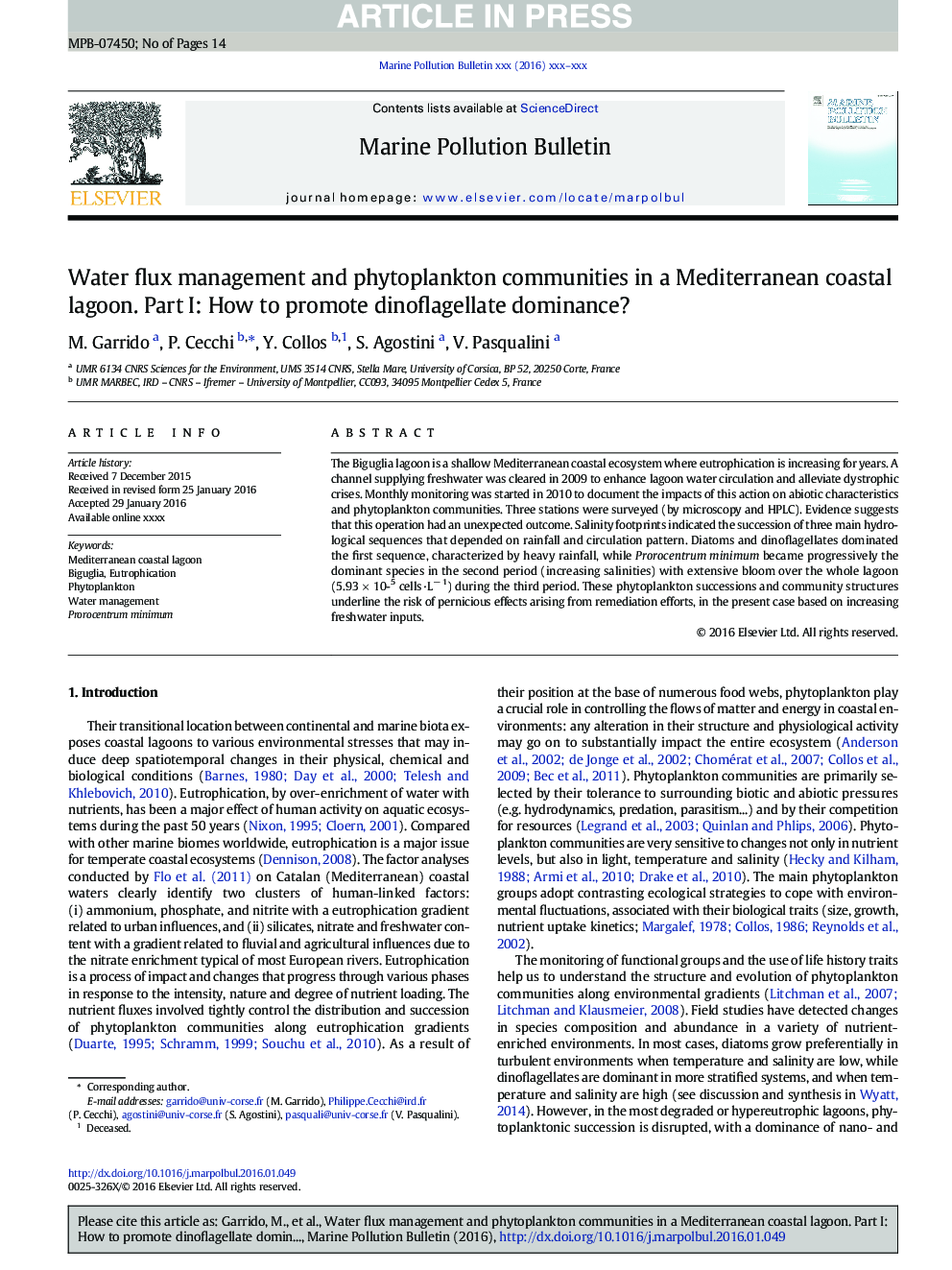| Article ID | Journal | Published Year | Pages | File Type |
|---|---|---|---|---|
| 6355836 | Marine Pollution Bulletin | 2016 | 14 Pages |
Abstract
The Biguglia lagoon is a shallow Mediterranean coastal ecosystem where eutrophication is increasing for years. A channel supplying freshwater was cleared in 2009 to enhance lagoon water circulation and alleviate dystrophic crises. Monthly monitoring was started in 2010 to document the impacts of this action on abiotic characteristics and phytoplankton communities. Three stations were surveyed (by microscopy and HPLC). Evidence suggests that this operation had an unexpected outcome. Salinity footprints indicated the succession of three main hydrological sequences that depended on rainfall and circulation pattern. Diatoms and dinoflagellates dominated the first sequence, characterized by heavy rainfall, while Prorocentrum minimum became progressively the dominant species in the second period (increasing salinities) with extensive bloom over the whole lagoon (5.93 Ã 10-5 cells·Lâ 1) during the third period. These phytoplankton successions and community structures underline the risk of pernicious effects arising from remediation efforts, in the present case based on increasing freshwater inputs.
Related Topics
Physical Sciences and Engineering
Earth and Planetary Sciences
Oceanography
Authors
M. Garrido, P. Cecchi, Y. Collos, S. Agostini, V. Pasqualini,
